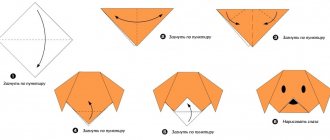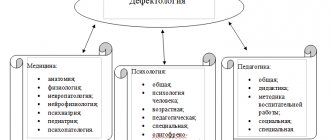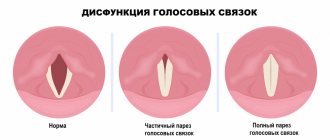In addition to speech symptoms, other changes are observed in children with neurological pathologies. Synkinesia in speech therapy is involuntary movements accompanying voluntary ones. For example, when the tongue is raised, the upper lip rises.
Similar phenomena can be observed not only in articulatory motor skills, but also in skeletal muscles. Especially in the areas associated with the speech centers of the cerebral cortex. Sometimes during a conversation a child moves his fingers, although this is not necessary - this is synkinesis. Such involuntary movements are one of the signs of complex speech disorders.
Kinds
There are several types of involuntary accompanying movements that can occur in people with speech disorders.
- Synkinesia of facial muscles. The cause of their occurrence is pathology of the facial nerve. Muscle tension occurs, leading to involuntary contraction. This pathology appears not only at the moment of speech, but also during movements in which the facial muscles are involved (chewing, blinking, etc.).
- Oral synkinesis can be observed in infants. This is a normal phenomenon that goes away by the end of the 3rd month of life. But if they persist, they can have a detrimental effect on the formation of articulatory motor skills, which will lead to impaired sound pronunciation.
- Pathological synkinesis is a reflection of the actions of a healthy limb. For example, when you raise your right leg, your left leg involuntarily rises. Or, during speech, a leg or arm twitching occurs.
Synkinesis often accompanies dysarthric disorders, especially when a person experiences strong psycho-emotional stress. Articulatory motor skills are impaired, and sometimes hypersalivation (excessive drooling) appears.
When diagnosing, a speech therapist notes the presence of tremor (shaking) of the tongue, disruption of the facial muscles, and involuntary movements of the lower jaw. Corrective work on overcoming synkinesis in speech therapy is carried out in parallel with other types of work for speech disorders.
Classification of general speech underdevelopment in speech therapy
In terms of clinical composition, the category of children with general speech underdevelopment is heterogeneous. Speech therapists distinguish the following forms of pathology:
- uncomplicated forms of general speech underdevelopment in children with minimal disorders of brain function - insufficient regulation of muscle tone, immaturity of the emotional-volitional sphere, motor differentiation);
- complicated forms of OHP in children with psychopathic and neurological syndromes - cerebrasthenic, convulsive, hypertensive-hydrocephalic, hyperdynamic;
- gross underdevelopment of speech in children with organic lesions of the speech parts of the brain (with motor alalia - the absence or underdevelopment of speech in children with normal hearing and initially intact intelligence).
The following classification of speech disorders in speech therapy is currently used:
- the first level of speech development is “speechless children” who lack common speech;
- the second level of speech development - the initial elements of common speech, a poor vocabulary, and the phenomena of agrammatism are determined - speech disorders manifested in difficulties in generating or perceiving sentences;
- the third level of speech development is the appearance of expanded phrasal speech with underdevelopment of its semantic and sound aspects;
- the fourth level of speech development – residual gaps in the development of the lexical-grammatical and phonetic-phonemic aspects of speech.
Etiology
Previously, doctors and speech therapists believed that it was impossible to cope with this pathology. It was believed that the cause was an irreversible disruption of the innervation of the facial nerve. But further research and clarification of the definition showed that the etiology of synkinesias is extensive, and accordingly, methods can be selected to overcome them. Causes:
- Disorders of the central nervous system (CNS).
- Disorders of the cerebral cortex (CGM).
- Violations of general muscle tone.
- Dysarthria.
- Pathological reflexes.
- Suffered a stroke.
- Improper functioning of facial muscles.
- Traumatic brain injuries.
All of these reasons are serious and require medical knowledge to choose the right treatment. Therefore, children with a history of synkinesis are provided with comprehensive care, including medical care. This increases the efficiency of correction work.
Features of speech therapy diagnostics
The presence of involuntary accompanying movements can also be identified during a speech therapy examination. To do this, check the condition of the motor sphere: general, finger, articulatory and facial.
Gross motor assessment
To evaluate it, they offer exercises for statics (holding) of a certain pose and dynamic tasks:
- standing alternately on one leg for a count of 5;
- stretch one leg and arms forward, close your eyes and try to maintain this position for a count of 5;
- jumping in place;
- running in place;
- march to the count while raising your legs and arms.
The specialist pays attention to coordination and the presence of accompanying movements: for example, when raising a leg, the child may stick out his tongue, or when standing on one leg, the other tries to straighten, etc. The child’s condition is also assessed: how quickly he gets tired, how he reacts if the task does not work out . Sometimes children with muscle tone problems may refuse to perform tasks because they experience physical discomfort. For example, there may be pain when straightening a leg or arm. All this is a sign of a violation of the general motor sphere.
Finger motor assessment
Many studies have proven that finger motor skills are associated with the work of speech centers. Therefore, special attention is paid to it in correctional work. If a child has difficulty mastering subtle differentiated movements with his fingers, then he may have difficulty forming sound pronunciation.
All exercises are performed in a certain sequence. First they do it with the right hand, then with the left and with both at the same time. You need to hold the poses for a count of 5.
- Keep your palm straight with your fingers close together in a vertical position.
- A similar task, only the fingers are spread apart.
- Extend your thumb and little finger.
- Make a “bunny” pose - put out your index and middle fingers, gather the rest into a pinch.
- The index and little fingers are straightened, the rest are gathered into a fist.
- Place your middle finger on your index finger.
- Connect all fingers one by one with the thumb (“Ring”). First on one hand, then on the other and on both at the same time.
- The fingers are clenched into a fist and unclenched several times.
- The palm is placed on the table and the fingers are connected and separated.
- Make a ring out of your fingers, then open your palm 5-8 times.
- One hand is in the “open palm” position, the other is clenched into a fist. Then they change places and repeat this several times.
While performing the above exercises, the speech therapist pays attention to the accuracy of their implementation; coordination; difficulties in switching. Synkinesis can manifest itself in conjugal movements of facial muscles (for example, lowering the lower jaw, raising the tongue, etc.) or simultaneous performance of all tests on both hands.
Assessment of facial muscles
Often, with severe speech disorders, there is a violation of facial motor skills. To test it, the child is asked to depict emotions of surprise, anger, sadness, joy. When performing this task, facial and oral synkinesis may appear. Before performing, the child is shown pictures depicting these emotions if he has difficulty understanding the instructions.
Articulatory motor assessment
For testing, they offer tasks to hold a pose and test the dynamic side.
- Make your lips a tube, round them, smile.
- Open your mouth wide and close it several times.
- Place your wide tongue on your lower lip.
- Pull out the narrow tongue.
- Raise and lower your tongue.
- Move your tongue left and right.
- Hold in a “Cup” shape.
- Suck the tip of your tongue to the roof of your mouth (“Mushroom”) and hold it in this position.
- Make a “Mushroom” and raise and lower the lower jaw.
- Make a "Horse".
While performing the exercises, the specialist looks at the accuracy of the movements; switching features; the presence of tongue tremor and the state of its muscle tone. With dysarthria, synkinesis may appear during testing of articulatory motor skills. For example, when the child lowers his tongue, his forehead wrinkles or his upper lip droops; other types of involuntary movements may also occur.
Treatment methods
It will not be possible to completely get rid of spastic syndrome, but you can make sure that the spasms bother you as little as possible and do not interfere with your everyday life. There are several areas of treatment:
- Therapeutic physical education (physical therapy). In fact, it is the only truly effective method of combating spasticity that gives lasting results. You need to regularly perform a set of muscle stretching exercises: stretch your toes, do circular rotations with your feet, straighten and bend your legs in a sitting position, bend your torso, lift your legs one by one, bend your knees in a position on your stomach. For exercise therapy, you can and should use various auxiliary equipment: balls, benches, hand controls, various exercise machines and other useful devices.
- Surgical procedures. There is a temporary solution that surgeons can offer - tendon trimming. For a while, the spastic syndrome actually disappears, but then it returns and becomes even stronger. Do not rush to agree to this operation until you weigh the pros and cons.
- Pills or injections. Medications can calm painful cramps. But the duration of action of drugs usually does not exceed 2-3 hours, and after prolonged use the drugs will become completely ineffective. In addition, due to medications, spastic manifestations can become stronger and more intense.
Exercise therapy and lying on your stomach with a pillow under your chest are the simplest and at the same time the most effective means against increasing spasticity. This treatment has no side effects or risks. In addition, if a person with a disability buys technical means of rehabilitation himself, then he can receive compensation from the state for their cost through social services. For more detailed information, please contact our consultants.
Corrective work
To overcome synkinesis you need a complex effect. These are exercises to improve general motor skills and relax muscle tone. Therefore, such patients are often recommended to take up swimming, because it has a beneficial effect not only on motor activity, but also on the nervous system.
Children with synkinesis attend exercise therapy classes and undergo courses of therapeutic massages prescribed by the doctor. If they manifest themselves in articulatory and facial motor skills, then a course of speech therapy massage is added. It should only be performed by a speech therapist who has completed special courses. At home, you can do simple self-massage, which also has a beneficial effect on the facial and articulatory muscles.
For dysarthria, drug treatment is prescribed. It not only stimulates the work of speech centers, but also affects the state of muscle tone.
The sooner parents seek advice from a specialist, the more effective the correction work will be. Overcoming synkinesis has a beneficial effect not only on speech activity, but also on the nervous system and muscle tone.
Spasticity
Gavrilkina Oksana Sergeevna Chief rehabilitation doctor, physical therapy and sports medicine doctor,
More about the doctor
Spasticity or muscle hypertonicity as a syndrome signals the progression of central nervous system diseases. It can occur in older people in response to the death of motor neurons or as a consequence of a cerebral stroke, spinal stroke, head or spinal injury . Different severity of spasms can either not interfere with the patient’s life at all or lead to disability. It is noteworthy that at the initial stages of rehabilitation after a stroke, muscle spasticity indicates the possibility of complete restoration of motor activity of the limbs.
Factors causing spasticity
Mildly expressed cramps and spasms are often diagnosed in the elderly due to age-related changes in the nervous regulation of muscles and tendons. This is also facilitated by wearing tight shoes and clothes, frequent hypothermia, bad habits, excess weight, constant stress, and some chronic diseases. Since neurodegenerative diseases develop in genetically predisposed patients, muscle spasticity , which develops due to pathologies of the central nervous system, can also be considered as a syndrome that is inherited. In addition, spasticity occurs against the background of such diseases:
- brain stroke;
- inflammation of the meninges (meningitis);
- varicose veins;
- atherosclerosis;
- arterial hypertension;
- diabetes;
- brain and/or spinal cord injuries.
Often muscle spasticity develops against the background of Parkinson's disease , Alzheimer's disease , senile dementia . Cramps and increased muscle tone can be triggered by any inflammatory diseases, constipation, or infections of the genitourinary system.
Symptoms of spasticity in the elderly
The first thing a specialist pays attention to when diagnosing spasticity is increased muscle tone. In this case, the patient complains of spontaneous cramps, especially at night and after physical activity, pain when flexing/extending the limb. Deformations in the joints are also observed, and posture changes. The reflex response increases. The pathology is aggravated by concomitant inflammatory processes in the joints, and the intensity of pain increases.
Diagnosis and treatment of spasticity in the elderly
When assessing the severity of pathology neurologically, the Ashworth scale . In it, the severity of the disease is divided according to the severity of muscle hypertonicity. The maximum degree of damage is 4, in which the limb under study practically does not bend/extend. Using CT or MRI, the presence of any disorders in the central nervous system or spinal injuries that can cause spasticity is determined.
Treatment is conservative, comprehensive, and includes both the use of medications and physical therapy. Self-medication is contraindicated; all drugs used to treat spasticity are available with a doctor's prescription. Their action is aimed at reducing muscle tone by inhibiting interneurons and blocking nerve impulses. An overdose leads to hallucinations, respiratory arrest, and death.
Local anesthetics may be used to relieve pain. Convulsions can be controlled with magnesium supplements. It is mandatory to take B vitamins to improve the functioning of neurons, activate trophism and blood circulation, and relieve inflammation.
Physiotherapy consists of the use of electrophoresis , acupuncture , therapeutic massage , and exercise therapy .
In case of injuries, tumors, or deforming changes in the joints, surgical intervention may be required. The operation consists of truncation of nerve roots that cause muscle hypertonicity. For the treatment of mild and moderate spasticity in elderly and senile people, surgical intervention is not recommended.
![Hard and soft sound [d]](https://ls-kstovo.ru/wp-content/uploads/tverdyj-i-myagkij-zvuk-d3-330x140.jpg)





